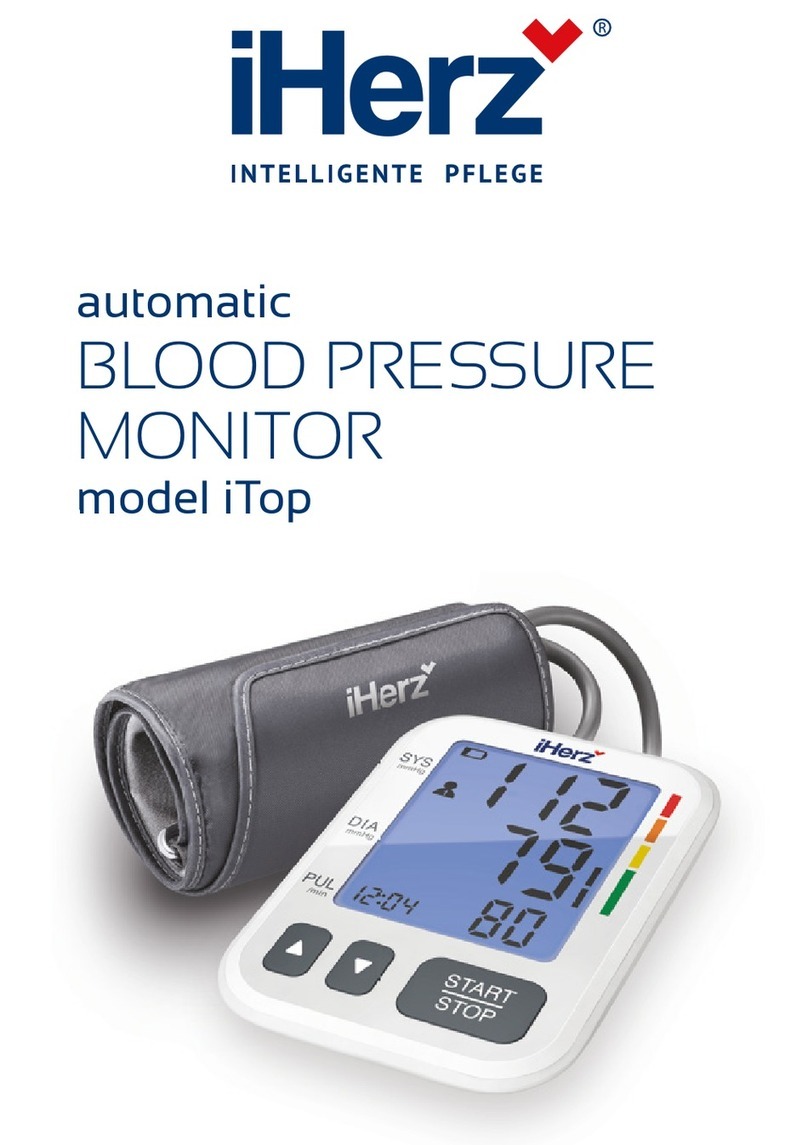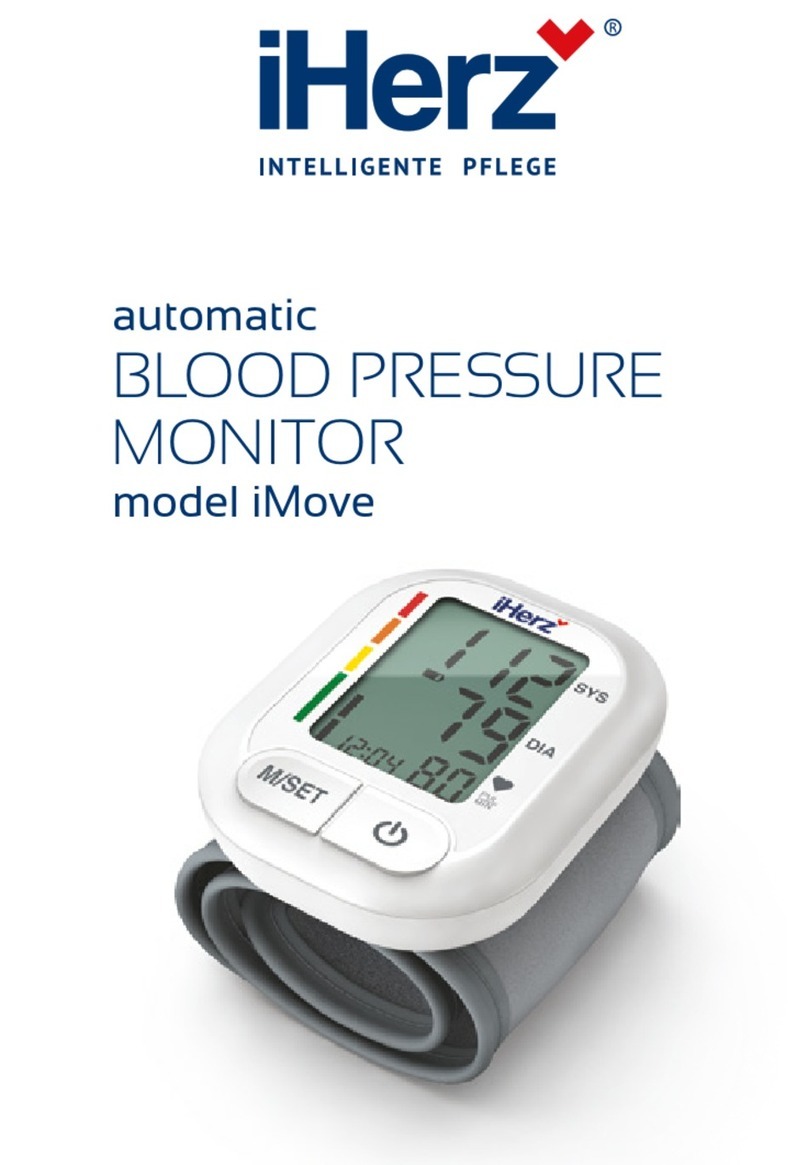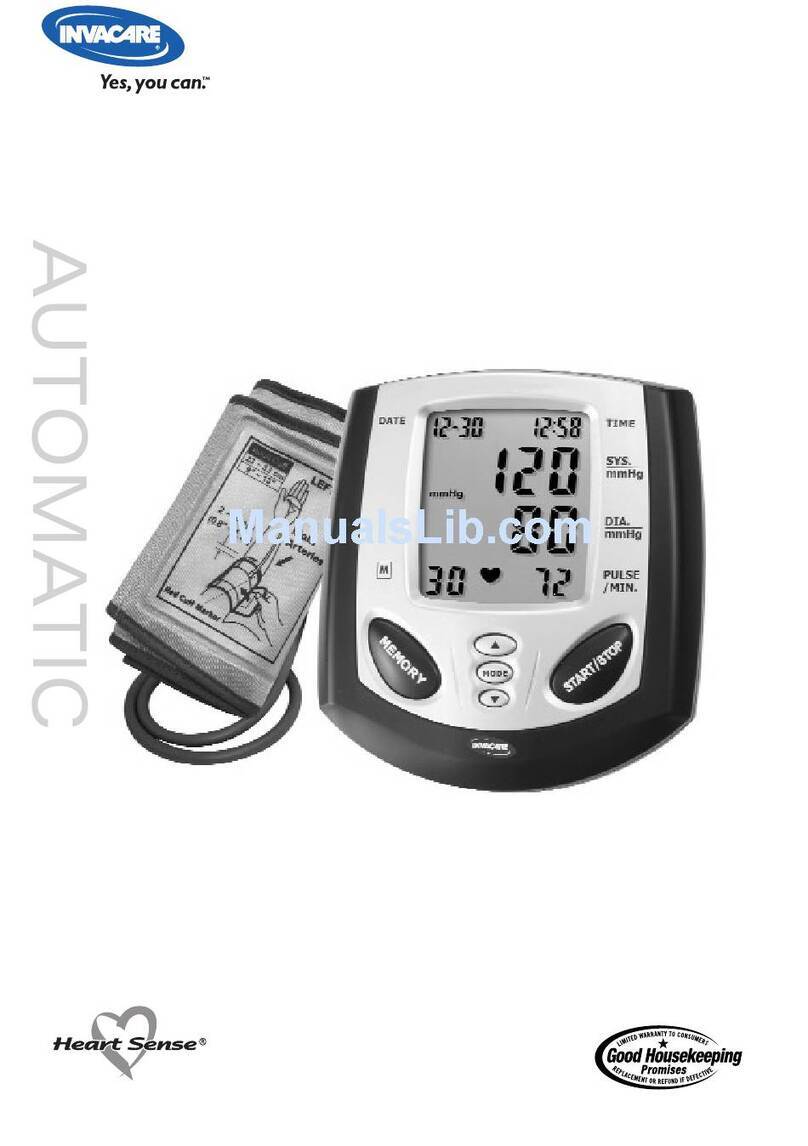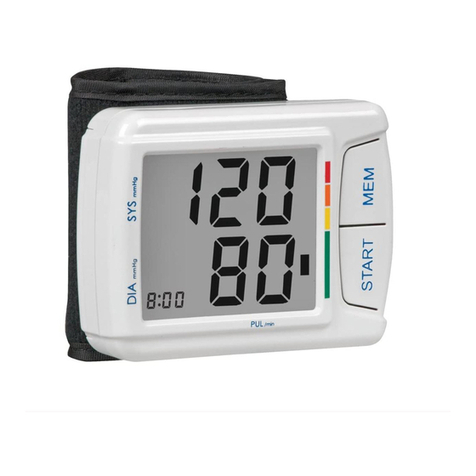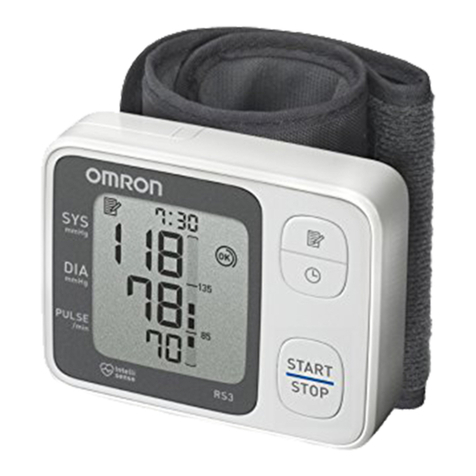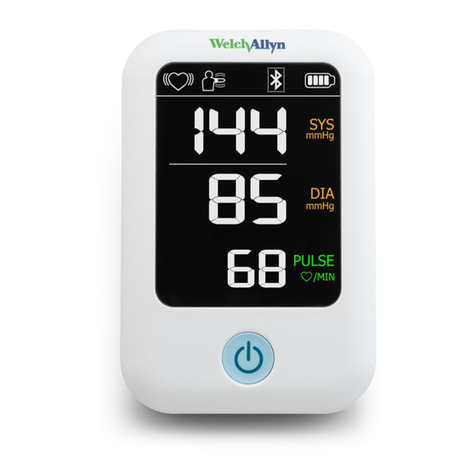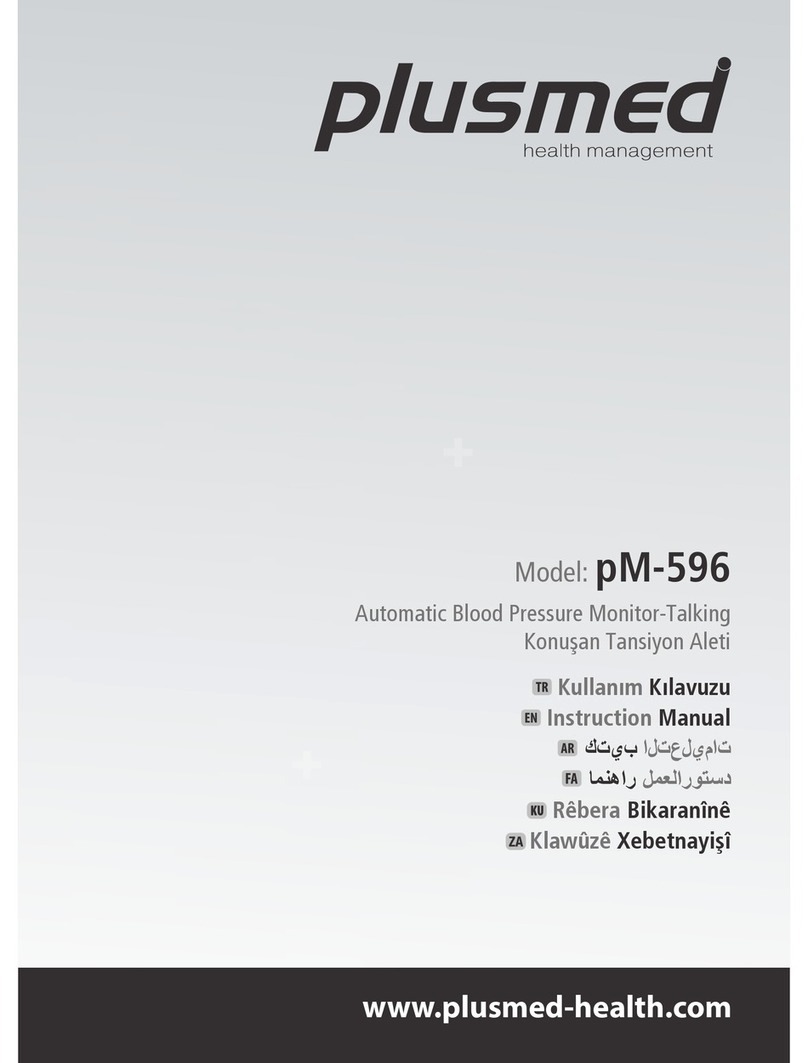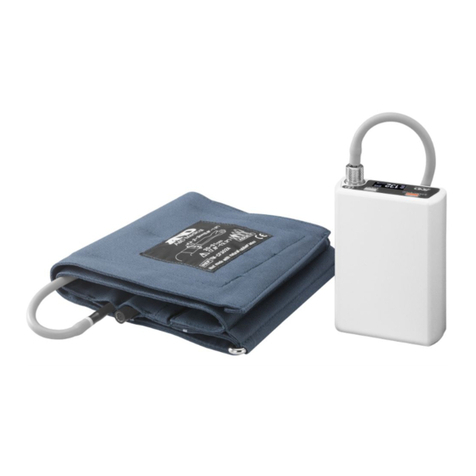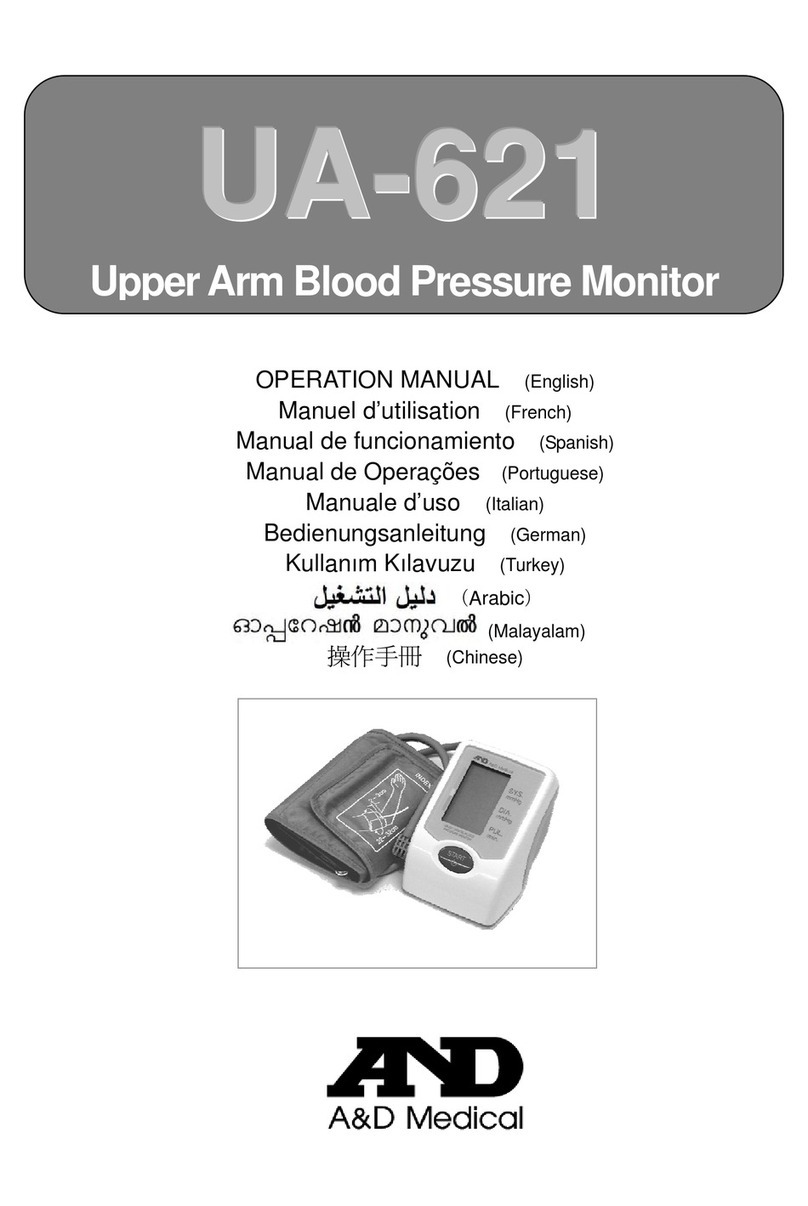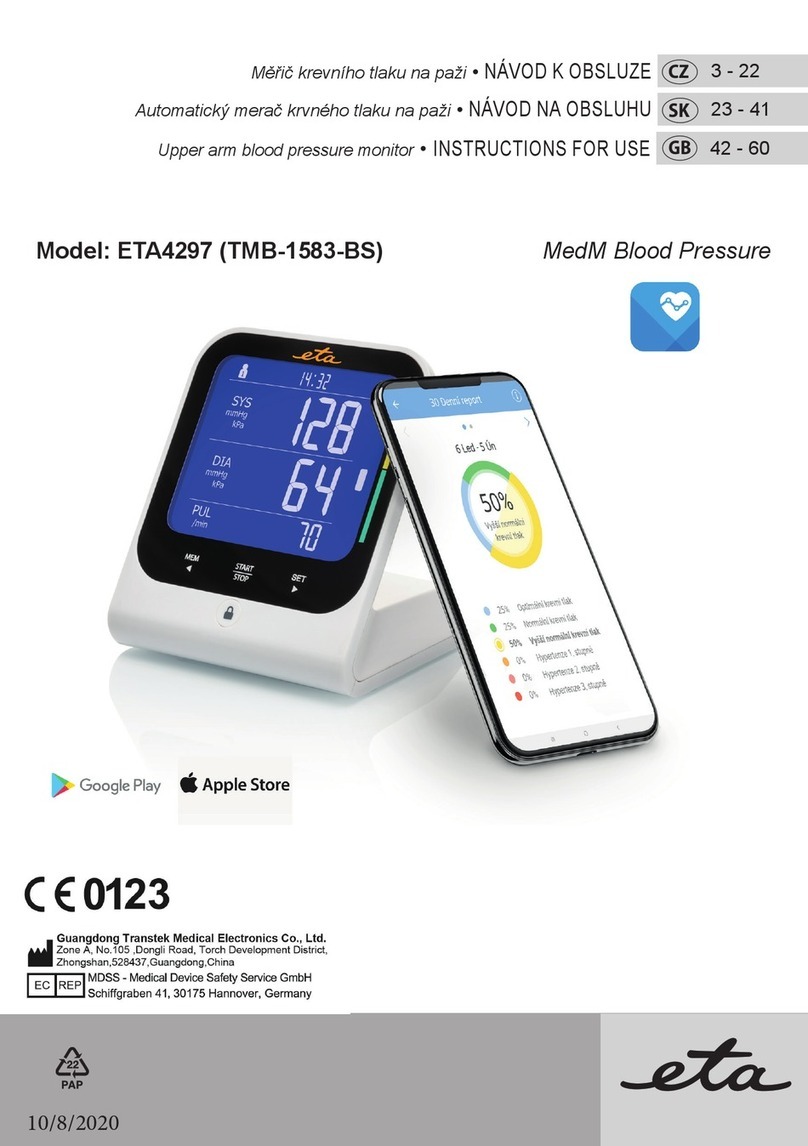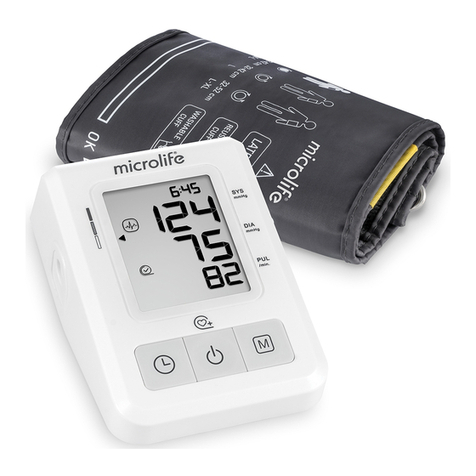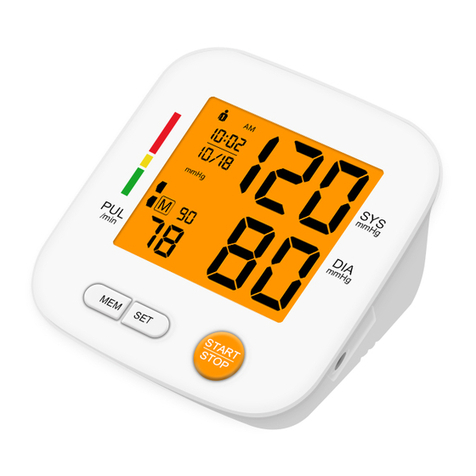iHerz iBase User manual

Aneroid
BLOOD PRESSURE KIT
model iBase

2
USER’S MANUAL
ANEROID BLOOD PRESSURE KIT model iBase
CAUTION:
This device is used to measure arterial blood pressure. Please read all
instructions before using this instrument to take your blood pressure.
Follow all CAUTIONS to avoid damaging the instrument or hurting
yourself. Talk to your doctor for information about your blood pressure.

EN 3
TABLE OF CONTENTS
Unit Assembly...................................................................................5
What Is Blood Pressure....................................................................6
How to Take a Reading ....................................................................7
Quick Reference Guide ....................................................................9
Storage and care............................................................................10
Warranty .........................................................................................10
Technical Specications ................................................................. 11
UNIT ASSEMBLY
Lay out the parts as pictured. The cu should already be folded through
the metal D-ring. If the cu is not pre-folded, lay the cu at in front of you.
Place the metal D-ring on your left. Pull the end of the cu through the
metal bar. If you fold the cu correctly, the hook and pile material faces the
outside of the cu loop.
Look at the drawing to help you put the unit together.
1. Attach the gauge to the tubing
on the left.
2. Attach the ination bulb to the
tubing on the right.
3. Attach the single end of the
Y-tubing to the stethoscope
chestpiece.
4. Attach the double end of the
Y-tubing to the binaural.
NOTE: Model iBase adult medium cu ts arm circumfer-
ence 22-36 cm. For easy assembly follow diagram.
Connect each component securely to avoid injury and instrument damage.
1
3
2

4
WHAT IS BLOOD PRESSURE?
Blood pressure is the force exerted on the walls of your blood vessels as
blood ows through them.
The heart is like a pump. When it contracts. or beats, it sends a surge of
blood through the blood vessels and pressure increases. This is called
systolic pressure. When your heart relaxes between beats, your blood
pressure decreases. This is diastolic pressure.
When a doctor takes your blood pressure, he or she measures both
your systolic and diastolic pressures and records them as numbers. For
example, if your blood pressure reading is 126/76(126 over 76), your
systolic is 126 and your diastolic is 76. The numbers are calculated in
millimeters of mercury and recorded as 126/76 mmHg.
Blood pressure varies during the day. Factors inuencing your blood
pressure include physical activity, medications, and your emotional and
physical condition. A single measurement does not provide a true picture
of your blood pressure. You need to measure your blood pressure over
a period of time.
IMPORTANT: CONSULT YOUR DOCTOR TO DETERMINE YOUR
NORMAL BLOOD PRESSURE. ONLY A DOCTOR IS QUALIFIED TO
DIAGNOSE AND TREAT HIGH BLOOD PRESSURE. PRACTICE THE
MEASUREMENT PROCEDURES FOR THIS INSTRUMENT CARE-
FULLY. CHECK YOUR PROCEDURE WITH YOUR DOCTOR.
Heart Contracts
(Pressure Increases)
Heart Relaxes
(Pressure Decreases)

EN 5
Indications for the use of non-automatic sphygmomanometers are any
states that lead to an increase in blood pressure (in particular, the hypertonic
disease, the cardiovascular disease, the heart attack, or the stroke).
The Korotkov method distinguishes ve phases of tones:
Phase I: the appearance of rst permanent tones, the intensity of which
increases as the air is released from the pressure cu. Indications of the
sphygmomanometer at the rst tone corresponds to the level of systolic
arterial pressure.
Phase II: a “blowing” noise is added to the tones.
Phase III: intensity of tones and noise increases and reaches a
maximum.
Phase IV: a sharp weakening of the tones and disappearance of the
“blowing” noise. This phase can be used to determine the diastolic
arterial pressure in the patients who do not have Phase V tones (tones
are heard up to the zero mark of the sphygmomanometer).
Such patients can include children up to 12-14 years old, pregnant
women, people with hyperthyroidism, aortic insuciency, high cardiac
minute output, and high body temperature.
Phase V: disappearance of tones. The indication of the sphygmomanometer
at the last tone corresponds to the diastolic blood pressure level*.
*Key Moments of Internal Disease Diagnostics / Editor: Zh. D. Kobalava.
— M.: Peoples’ Friendship University, 2011. — p. 175. — 397 pp.
Which Values are Normal?
The world standard as for the norms of the blood pressure is the
Classication* of the World Health Organization (WHO):
Category
Systolic
Blood Pressure
(mmHg)
Diastolic
Blood Pressure
(mmHg)
Blood pressure too low < 100 < 60
Blood pressure optimum 100 - 119 60 - 79
Blood pressure normal 120 - 129 80 - 84
Blood pressure slightly high 130 - 139 85 - 89
Blood pressure too high 140 - 159 90 - 99
Blood pressure far too high 160 - 179 100 - 109
Blood pressure dangerously high ≥ 180 ≥ 110

6
*Printed with curtailments.
* The diagnosis of hypertension requires from the patient to combine medical treat-
ment prescribed by the doctor and mode of life correction.
* People with normal pressure and high normal pressure are recommended to
carry out self-control of their tension in order to timely take measures to decrease
the blood pressure level down to the optimal one without using any medications.
* For people more than 50 years old high level of systolic blood pressure (higher
than 140 mmHg) is more crucial than diastolic pressure.
* Even with blood pressure being normal, people run the bigger risk of hypertension
development with advancing age.
ATTENTION
If you have normal results of blood pressure measured under calm
conditions but your results are excessively high when measured under
the conditions of physical or mental exhaustion, this might be a sign
of so called brittle (that is unstable) hypertension. If you suspect that,
please, consult your doctor.
When measured correctly, if diastolic blood pressure is more than 120
mmHg, it is necessary to call the doctor immediately.
HOW TO TAKE A READING
1. Make sure you are seated with your feet at and your back and arm
supported. Rest your arm at heart level.
CAUTION: MAKE SURE ALL COMPONENTS ARE ASSEMBLED
CORRECTLY AND SECURELY. FAILURE TO DO SO MAY RESULT IN
INJURY OR AN INCORRECT READING.
2. Locate brachial artery by placing two ngers 2 cm above the bend of
the elbow on the inside of the arm.
Tendon
Elbow

EN 7
3. Put your left arm through the cu loop. Place the bottom edge of the
cu approximately (1-2) cm above the elbow. Place the cu so that the
air-pipes were over the brachial artery.
4. The cu should be wrapped so that it ts snugly and stays in place.
You should be able to place one nger between the cu and arm. Fasten
the cu by folding the end of the cu over the D-ring and press the hook
material rmly against the fuzzy pile material. Make sure the cu sits
correctly.
5. Put the chestpiece over the brachial artery under or 1-2 cm below the cu.
6. Insert stethoscope ear-pieces into ears.
7. Rest your arm on a table. Relax your arm, and turn your palm upward.
Ensure the cu is same level as heart.
Bottom Edge
Stethoscope
1/2 cm Tendon
Bladder Tu besY-tubing
Pile material
Sewn hook
material

8
8. Place the gauge in front of you. Hold
the bulb in your hand, which is not
measured. Close the air release valve
attached to the ination bulb by turning
it clockwise.
9. To inate the cu, rapidly squeeze the
ination bulb. If you KNOW your normal
SYSTOLIC pressure, inate the cu until
the gauge reaches approximately 30
mmHg ABOVE normal SYSTOLIC read-
ing. If you are unsure or do not know your
normal SYSTOLIC reading consult your
doctor for the correct ination level.
CAUTION: DO NOT INFLATE THE
CUFF ABOVE 280 mmHg. YOU MAY
INJURE YOURSELF OR DAMAGE THE
INSTRUMENT.
10. Slowly open the air release valve by
turning it counter-clock- wise. Release
the air at a rate of (2-3) mmHg per
second.
11. Listen carefully for the appearance of sounds, watching the gauge
needle. When you hear the rst appearance of sound, it is your SYS-
TOLIC blood pressure reading.
12. Continue to release the air at a rate of(2-3) mmHg per second. When
you no longer hear any sounds, that is your DIASTOLIC blood pressure
reading.
13. Turn the air release valve counter-clockwise to release the remain-
ing air. Record your measurement in the record chart. You should record
reading early, (not to forget values). Remove the stethoscope from your
ears. Remove the cu.
NOTE: If you want to take another reading, you can reinate up
to twice. Wait at least 5 minutes before measuring again, to avoid
inaccurate readings due to the engorged blood vessels.

EN 9
QUICK REFERENCE GUIDE
Before
1. MEASURE your blood pressure at the SAME TIME each day.
2. RELAX for at least 5 minutes before taking a measurement.
3. Remove tight tting clothing from your upper arm.
4. DO NOT eat, smoke or exercise for at least 30 minutes before taking
a measurement.
During
1. PLACE CUFF at the heart level.
2. STETHOSCOPE CHESTPIECE covers the BRACHIAL ARTERY.
3. INFLATE unit to proper level (30-40 mmHg above estimated systolic
pressure).
4. DO NOT talk or move during a measurement.
5. DEFLATE unit at (2-3) mmHg per second.
After
1. WAIT 5-10 minutes before taking another measurement.
STORAGE AND CARE
Cleaning
• DON’T use organic solvents to clean the device.
• Wipe the sphygmomanometer and the compressor with a soft cloth. No
sterilization of the sphygmomanometer is necessary because its parts
must not come into contact with the parts of the patient’s body during
the measurement.
• Use a damp cloth or a mild detergent, then wipe with a dry cloth.
• Clean the pressure cu, use a damp cloth or a soft detergent.
• Use disinfection wipers to disinfect the pressure cu.
• DON’T wash the pressure cu.
• DON’T iron the pressure cu.
Storage of the device
To protect your unit from damage, please AVOID washing or moistening
the cu, dropping the gauge, or hitting the surface of the stethoscope.
Your new blood pressure unit has been carefully checked to assure reli-

10
ability and accuracy prior to shipment and use. However, as with any
sensitive instrument subjected to repeated use, we recommend that
your blood pressure gauge be checked periodically. When the cu is
fully deated, the gauge needle must stay within the accuracy indicator
zone. If the needle points outside of the accuracy indicator zone, the
gauge will give inaccurate readings. In this case you have to bring the
device to the nearest service centre for calibration (address mentioned
in warranty card).
WARRANTY
The blood-pressure monitor is guaranteed for 1,5 years from the date of
purchase. Warranty for the cu and bulb is 1 year from the date of pur-
chase. The warranty is only valid upon presentation of the warranty card
which was correctly lled in and sealed by the seller (or by the service
center representative) with the date of the purchase (repair), the check,
instruction manual and safe packaging of the device.
• The warranty does not apply to wear out of cu, rubber tubes and
packaging box.
• The warranty does not apply to damage caused by improper handling,
accidents, not following the operating instructions or self-maintained
alterations made to the device.
• The device cannot be returned if it is without original packaging, with mechan-
ical damages (scratches, stains and so on) or without any component.
• The device which was used and needs repair cannot be replaced with
a new one. In case there was violation of operating rules during war-
ranty period, repair will be done at the expense of the consumer.
Important! No modication of this equipment is permitted.
Important! Do not modify this equipment without the manufacturer’s
permission.
Important! If this equipment changes, a corresponding inspection and
testing must be carried out to guarantee further safe use.
SYMBOL DESCRIPTION
SYMBOL DESCRIPTION
Refer to User Manual
Manufacturer

EN 11
Serial number
Dispose of in accordance with requirements in your country
СЕ marking
TECHNICAL SPECIFICATIONS OF MODEL IBASE
Unit weight in an individual
package:
not more than 0.5 kg
Unit dimensions in an individu-
al package:
not more than 200 x 120 x 75 mm
Storage temperature: -20 °С to +70°С
Humidity: 15% - 85% relative humidity
(non-condensing)
Operation temperature: 10 °С tо 40 °С
Measuring range: 20 to 300 mmHg
Measuring resolution: 2 mmHg
Graduation interval: ± 3 mmHg
Maximum allowable error: ± 3 mmHg/sec.
Accessories:
1. Sphygmomanometer.
2. Сu (medium size cu for adults, with arm circumference of 22-36
cm) with inlaid bladder.
3. Bulb and valve.
4. Stethoscope.
5. Soft bag.
6. Packaging.

12
Important
• Manual disassembly of the sphygmomanometer is forbidden
• This device must be disposed of in accordance with local regulations and
must not be disposed of with household garbage.
Information on standards
This appliance meets the requirements of the EEC Directive as regards
medical equipment 93/42 / EEC.
CHECKING
The device is calibrated at manufacturing checking. During usage and
after repair it is recommended to check the device 1 time a year, in author-
ized laboratories with a standard, which is traced in national standards.
* Maintenance of a blood pressure meter is not carried out by the con-
sumer.
Table of contents
Other iHerz Blood Pressure Monitor manuals

